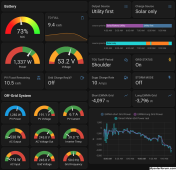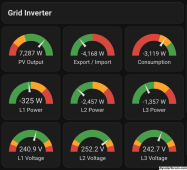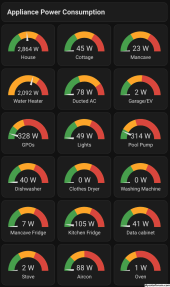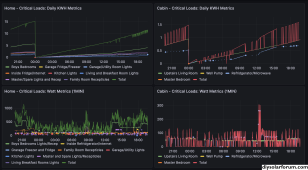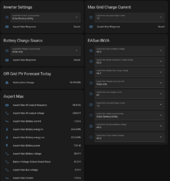I know some people will crap on this post because it’s not efficiently using a solar inverter for its full intended purpose but whatever. Some are simply looking for a low cost backup solution for critical loads in their house in the event of a grid outage. That intent is what started me in this never-ending path of PV self reliance and my very first inverter purchase in 2020 of a Growatt 3000 SPF 48v. This little inverter isn’t the greatest but it’s pretty damn good. Yes there is some LED flicker when on battery, yes it has low PV voltage input and it’s not highly configurable…MAYBE.
I still use this inverter to power my garage lights/fridge/freezer/few other things with no PV attached, simply for backup and testing, just a 10kwh battery but can deploy PV in a few minutes if needed. This unit has really been rock solid.
Growatt Automation with Solar Assistant and Home Assistant: Flickering LED lights are a PITA but IF ONLY using this inverter for backup (sure other cheap inverters are the same), there is an easy way around this which allows you to also cycle your batteries slowly.
Steps:
Scripts:
I still use this inverter to power my garage lights/fridge/freezer/few other things with no PV attached, simply for backup and testing, just a 10kwh battery but can deploy PV in a few minutes if needed. This unit has really been rock solid.
Growatt Automation with Solar Assistant and Home Assistant: Flickering LED lights are a PITA but IF ONLY using this inverter for backup (sure other cheap inverters are the same), there is an easy way around this which allows you to also cycle your batteries slowly.
Steps:
- Keep Inverter in Grid Bypass mode always (will auto change if grid goes down for backup)
- Leverage Solar Assistant and Home Assistant to change CHARGER SOURCE PRIORITY based on SOC/Voltage, whatever you use (scripts below). For me, at 50% SOC I switch charger priority to grid/solar and at 100% (after 1 hour to get some balancing) I switch to Solar Only.
Scripts:
alias: Growatt - To Utility @ 50% SOC - Utility Charge
description: Growatt - To Utility @ 50% SOC - Utility Charge
trigger:
- platform: numeric_state
entity_id: sensor.battery_state_of_charge
for:
hours: 0
minutes: 0
seconds: 0
below: 50
condition: []
action:
- device_id: <mydeviceID>
domain: select
entity_id: <myentityID>
type: select_option
option: Solar and utility simultaneously
mode: single
There is a lot you can do with SA and HA. Just have to drive in. I also have HA integrated with OpenWeatherMap which allows to change charge source priority if a large storm is coming in for example. Really cool stuff.alias: Growatt - To Battery @ 100% SOC - Solar Only Charge
description: Growatt - To Battery @ 100% SOC - Solar Only Charge
trigger:
- platform: numeric_state
entity_id: sensor.battery_state_of_charge
for:
hours: 1
minutes: 0
seconds: 0
above: 99
condition: []
action:
- device_id: <mydeviceID>
domain: select
entity_id: <myentityID>
type: select_option
option: Solar only
mode: single



